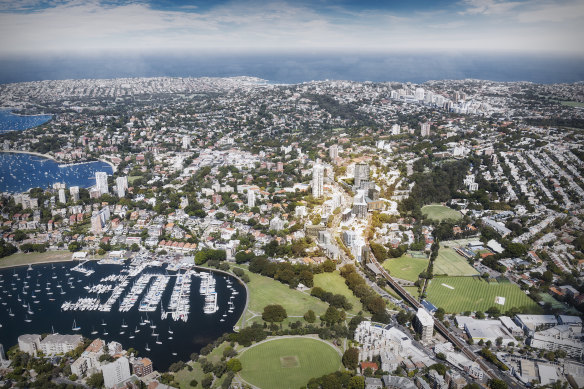This was published 6 months ago
Woollahra voters reject bid to cut down on councillors
A bid to cut the number of councillors in one of Sydney’s wealthiest and most highly represented local government areas has narrowly failed, in what local Liberals called a disappointing result.
The Woollahra referendum to downsize from 15 councillors to nine was defeated by less than 300 votes, with 50.98 per cent opting to retain the status quo.

Voters in the eastern suburbs LGA of Woollahra have narrowly rejected a proposal to reduce councillors from 15 to nine.Credit: Woollahra Municipal Council
But it was a different story on the Central Coast, where 61.74 per cent of voters agreed to cut their 15 councillors down to nine, beginning in 2028.
Voters in Hilltops, which includes the South Western Slopes town of Young, agreed to reduce their number of councillors from 11 to nine, and Port Macquarie narrowly assented to a reduction from nine to seven.
The result means Woollahra, with a population of just under 54,000 at the last census, maintains one councillor for every 3600 residents, and one councillor for every 0.8 square kilometres of land.
It is the second-highest level of representation in the metropolitan area after Hunters Hill, which has one elected official for every 2100 residents. By contrast, larger councils such as Canterbury-Bankstown, Blacktown and the City of Sydney have more than 23,000 people to each councillor.
The Liberals argued cutting councillors would save money – $208,000 a year, according to a staff report – and make the council more efficient.
Liberal councillor Toni Zeltzer, who has served since 2008, said the workload reduced significantly when councillors lost the power to assess development applications in 2017. The outcome of the referendum was disappointing, she said.
“Fifteen is just far too many councillors to be able to debate issues and the efficiency really drops out,” she said. “We are a smallish council, [with] a small footprint, but we’ve got one of the largest representations.”
The move was opposed by the Liberals’ main rivals, Residents First Woollahra, which played down the financial savings as a drop in the ocean, as well as the Greens, who described it as an attempted gerrymander for Liberal control.
Had “Yes” won, it may have placed pressure on other Sydney councils with comparatively high levels of representation, such as Lane Cove and Mosman, which both have about 4300 residents for every councillor.
Before the election, adjunct professor at the UTS Centre for Local Government Graham Sansom told the Herald the system benefited wealthy residents and bred inequality.
“When you leave these small local government areas with privileged populations and their very own little council in place, you cement privilege,” he said.
The referendums were among a number of results in the September 14 council elections confirmed on Monday as the NSW Electoral Commission computed the distribution of preferences.
Sydney Lord Mayor Clover Moore was re-elected for a historic sixth term with 62.9 per cent of the two-party-preferred vote over Labor’s Zann Maxwell – a 5 per cent swing to Labor from 2021. Ryde Liberal mayor Trenton Brown was successful in that council’s first direct mayoral election, winning 56.5 per cent of the two-party-preferred vote over Labor’s Bernard Purcell.
In other direct mayoral elections across the city, Liberal Michelle Byrne won in the Hills Shire, Ann Marie Kimber of Serving Mosman takes over from predecessor Carolyn Corrigan, independent Tanya Taylor was returned as mayor of Willoughby and Warren Waddell was elected Hornsby Shire mayor after beating Philip Ruddock for Liberal preselection.
Council results were being progressively released on Monday, and will continue on Tuesday. The Greens secured their first seat on Blacktown City Council with Damien Atkins declared elected in Ward 2, while the party also won a seat in Canterbury-Bankstown and two in Campbelltown.
Start the day with a summary of the day’s most important and interesting stories, analysis and insights. Sign up for our Morning Edition newsletter.